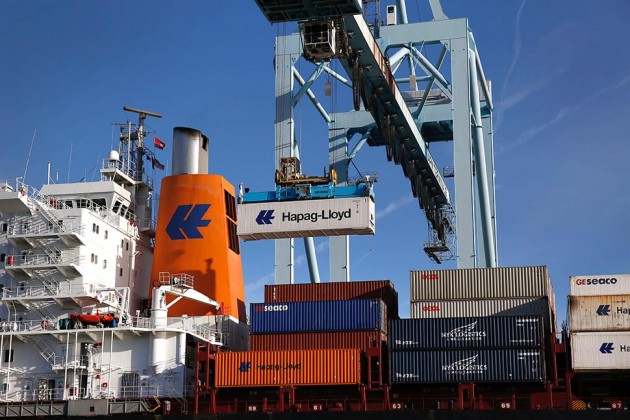- U.S. Economic Growth Cools on Biggest Trade Drag Since 2010
U.S. economic growth slowed more than forecast last quarter on the biggest drag from trade in six years and more moderate consumer spending. Business investment picked up, which may be a harbinger for faster expansion in 2017.
Gross domestic product, the value of all goods and services produced, rose at a 1.9 percent annualized rate following the prior quarter’s 3.5 percent gain, Commerce Department data showed Friday in Washington. The median forecast called for 2.2 percent. Consumer spending, the biggest part of the economy, rose 2.5 percent, in line with projections.
The results cap growth of 1.9 percent for the full year — near the average pace of the current expansion — and reinforce the leading role of household purchases while showing that businesses are starting to spend again. The strong job market and optimism among consumers and companies for President Donald Trump’s policies are likely to keep growth humming along in 2017, though tensions over trade could temper any gains.
“The economy is continuing to chug along in the slow lane,” said Stuart Hoffman, chief economist at PNC Financial Services Group Inc. in Pittsburgh. “Consumer spending was fairly solid. We’re at a turning point on the upside for business investment. Based on the economy and on the policies we’re likely to see, growth is going to speed up this year.”
Economists’ U.S. growth forecasts ranged from 1.7 percent to 2.9 percent. The GDP estimate is the first of three for the quarter, with the other releases scheduled for February and March when more information becomes available. Growth is seen at 2.3 percent in 2017 and 2018, based on median projections in a Bloomberg survey earlier this month.
Soybean Exports
Net exports subtracted 1.7 percentage points from expansion in the October-December period, the most since the second quarter of 2010, as the trade deficit widened following a jump in soybean shipments that helped add to growth in the third quarter.
In addition to household spending, the economy got help from business outlays on equipment, which rose 3.1 percent for the first gain in five quarters. Inventory accumulation added the most to growth since early 2015, housing made the strongest contribution in a year and government spending picked up.
To get a better sense of underlying domestic demand, economists look at final sales to domestic purchasers, which strip out inventories and exports, the two most volatile components of GDP. After adjusting for inflation, such sales grew 2.5 percent last quarter, the fastest since the third quarter of 2015, following a 2.1 percent increase.
The increase in household purchases, which account for about 70 percent of the economy, followed the prior quarter’s 3 percent jump. Spending added 1.7 percentage points to growth.
After-tax incomes adjusted for inflation climbed at a 1.5 percent annual rate, a three-year low. The saving rate decreased to 5.6 percent from 5.8 percent.
Inventories Grow
Inventory expansion added 1 percentage point to GDP growth, as stockpiles were rebuilt at a $48.7 billion annualized pace following a $7.1 billion rate.
Nonresidential fixed investment increased at a 2.4 percent annualized pace, adding 0.3 percentage point to growth, the most in five quarters. Investment in nonresidential structures, including office buildings and factories, fell at a 5 percent rate after a 12 percent jump.
The housing recovery continued last quarter. Residential construction increased at a 10.2 percent annualized rate, adding 0.37 percentage point to growth. That followed a 4.1 percent decline in the previous three months.
Government spending grew at a 1.2 percent rate as state and local outlays picked up. Spending by federal agencies fell for the third time in a year, dropping at a 1.2 percent pace.
The GDP report also showed price pressures remain limited. A measure of inflation, which is tied to consumer spending and strips out food and energy costs, climbed at a 1.3 percent annualized pace.

 Forex3 weeks ago
Forex3 weeks ago


 Naira2 weeks ago
Naira2 weeks ago
 Billionaire Watch2 weeks ago
Billionaire Watch2 weeks ago




 Naira2 weeks ago
Naira2 weeks ago




 Naira2 weeks ago
Naira2 weeks ago




 Naira1 week ago
Naira1 week ago




 Naira4 weeks ago
Naira4 weeks ago




 Naira3 weeks ago
Naira3 weeks ago






















